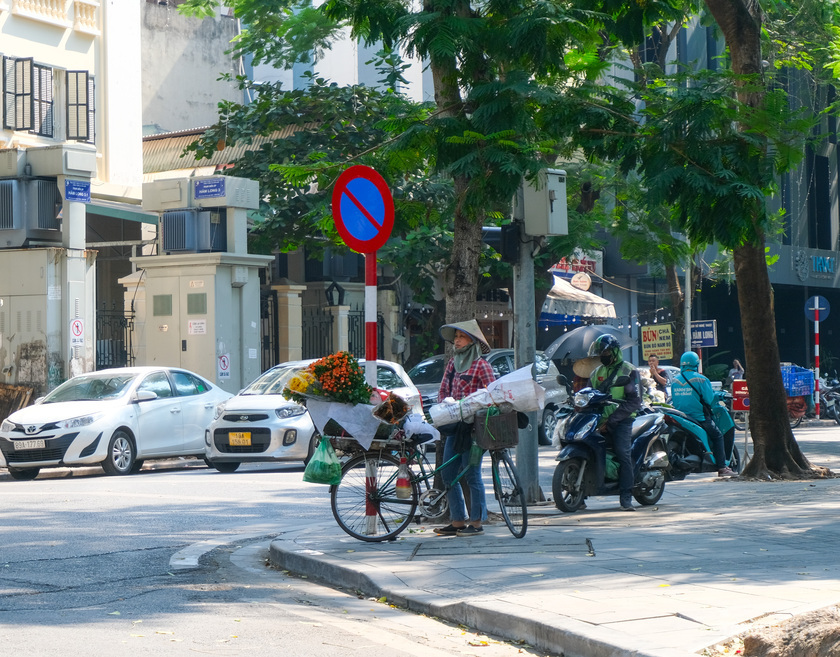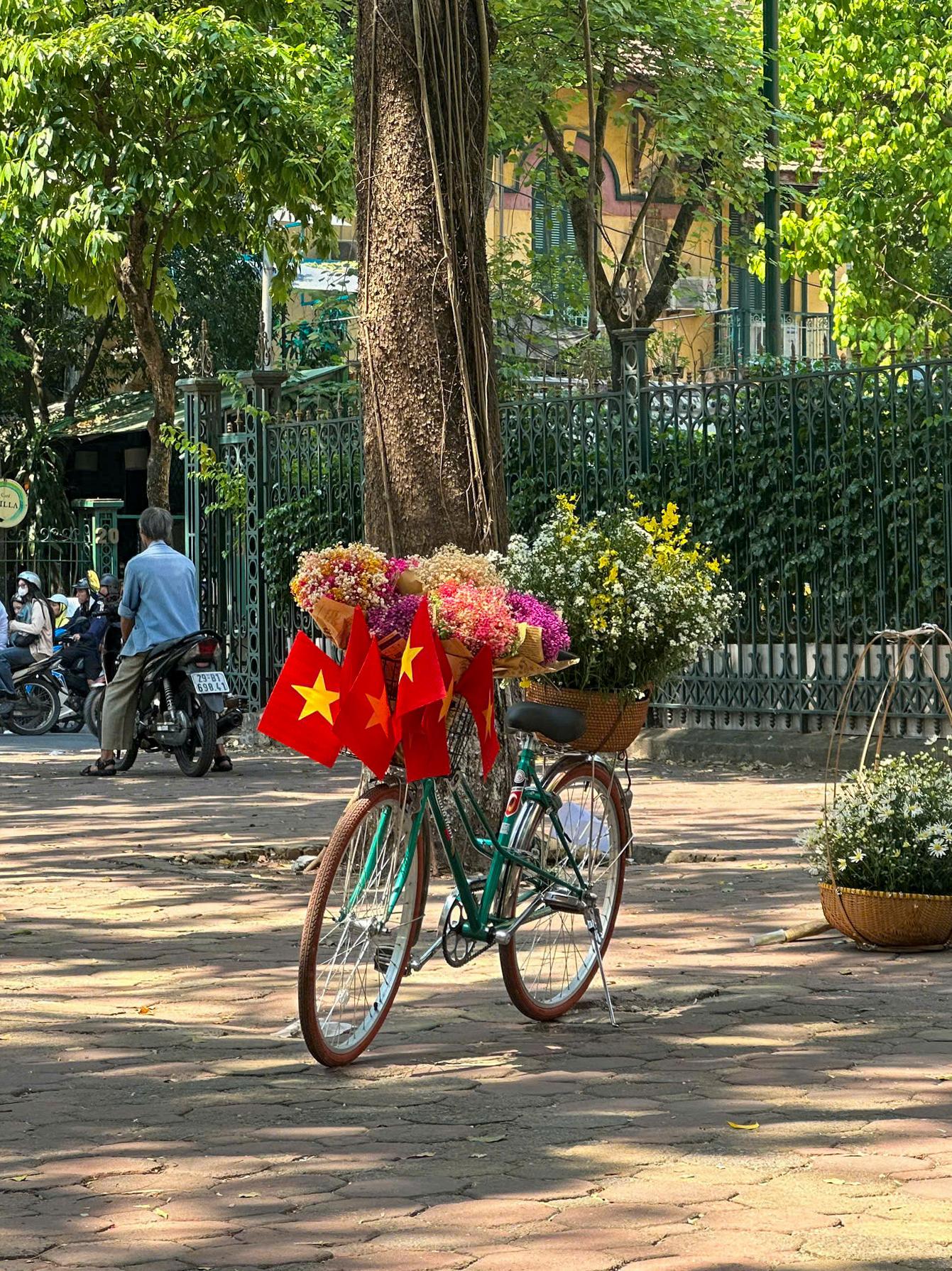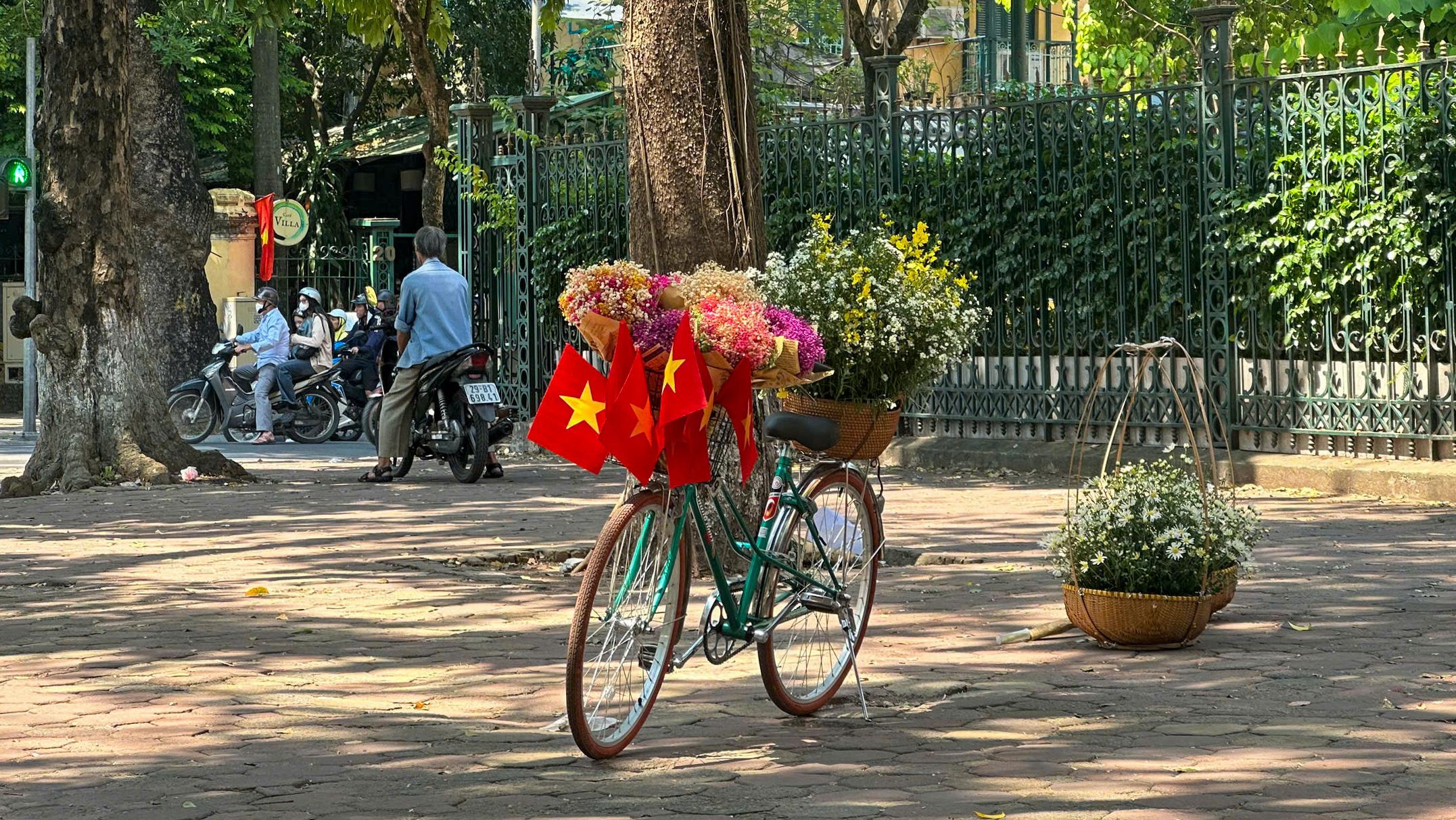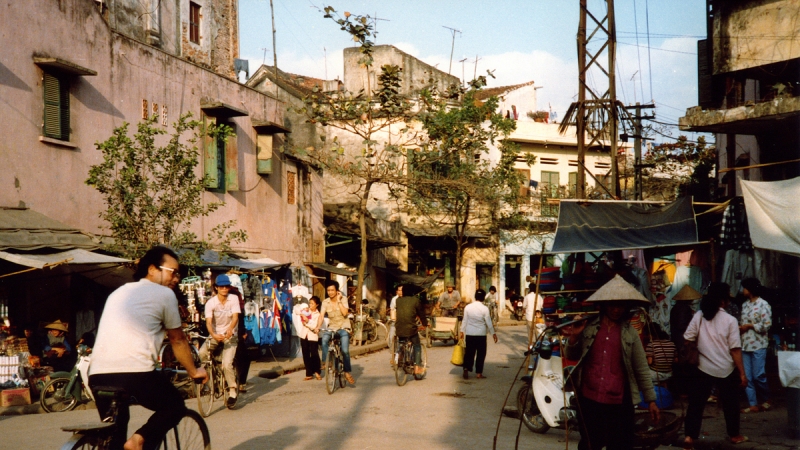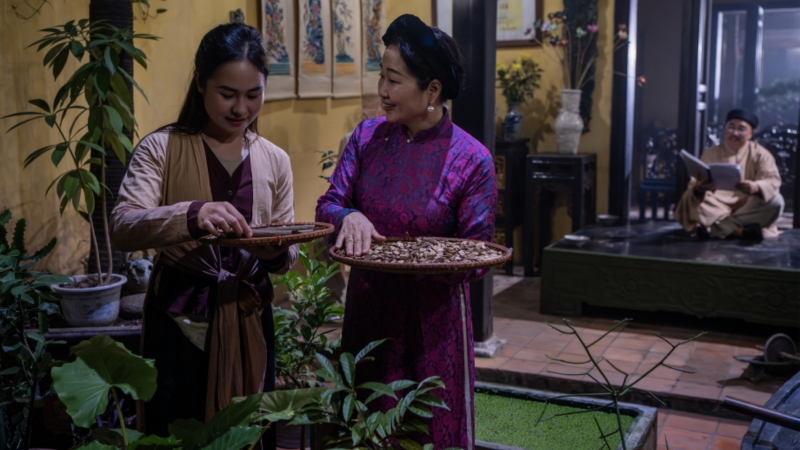Few people know when street vendors first appeared. It is only that, when talking about the life of this thousand-year-old city, people cannot help but mention street vendors, as a unique beauty of Hanoi culture.
From dawn until the street lights come on, the vendors and their carrying poles still diligently walk, carrying on their shoulders not only each item but also the story of life, the breath, the different fates. The conical hats cover the sunburned faces, but cannot hide the hard work and diligence. Through many rainy and sunny seasons, the image of street vendors not only reminds us of a difficult time but full of humanity, but also symbolizes the connection between the past and the present, between tradition and modernity.
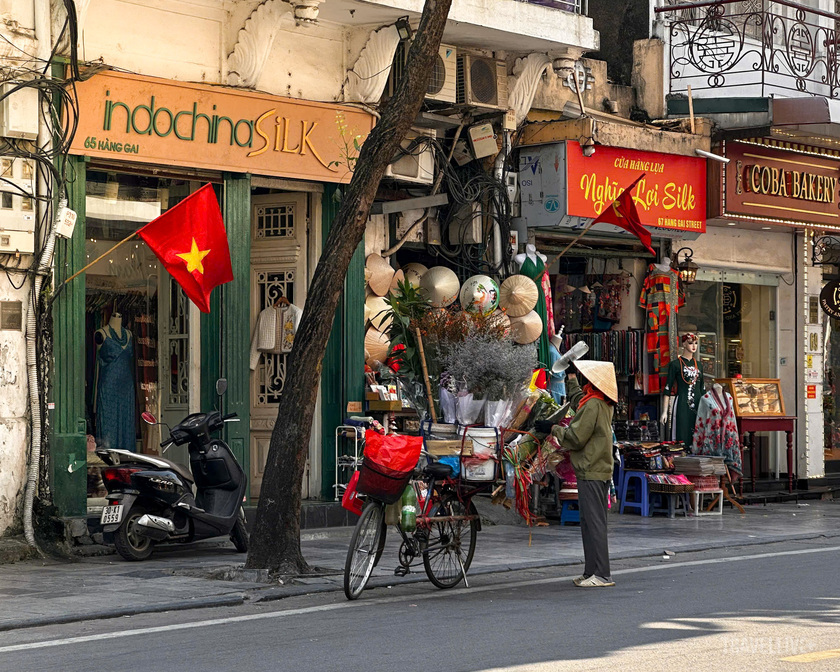
Street vendors still exist through the years, "carrying" the "life" in the midst of modern urban life.
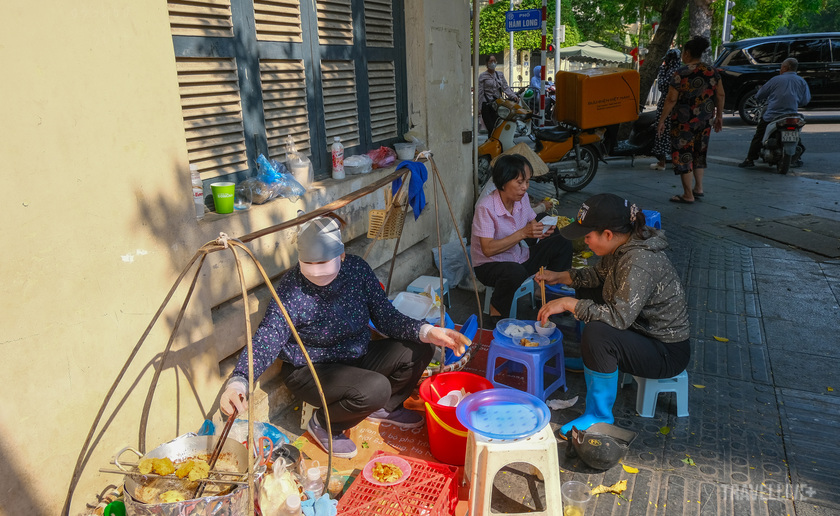
In the middle of a bustling city, the image of street vendors still carries an old nostalgic color.
Appearing since the feudal period, street vendors were initially a means of livelihood for poor workers, mainly farmers from the suburbs who brought agricultural products and goods into the city to sell. They did not have the conditions to open a fixed store, so they created a way to move goods using shoulder poles, making it easier to move on the narrow streets and cramped paths of old Hanoi.
In the late 19th and early 20th centuries, under the influence of French colonialism, Hanoi became a major center of trade and commerce. However, amidst that rapid development, street vendors still existed as a testament to the perseverance and flexibility of the working poor. The vendors grew and expanded in product types. Not only simple foods such as sticky rice, cakes, fruits, but also handicrafts, clothes and daily life items, while maintaining a part of the traditional identity of the Vietnamese people.
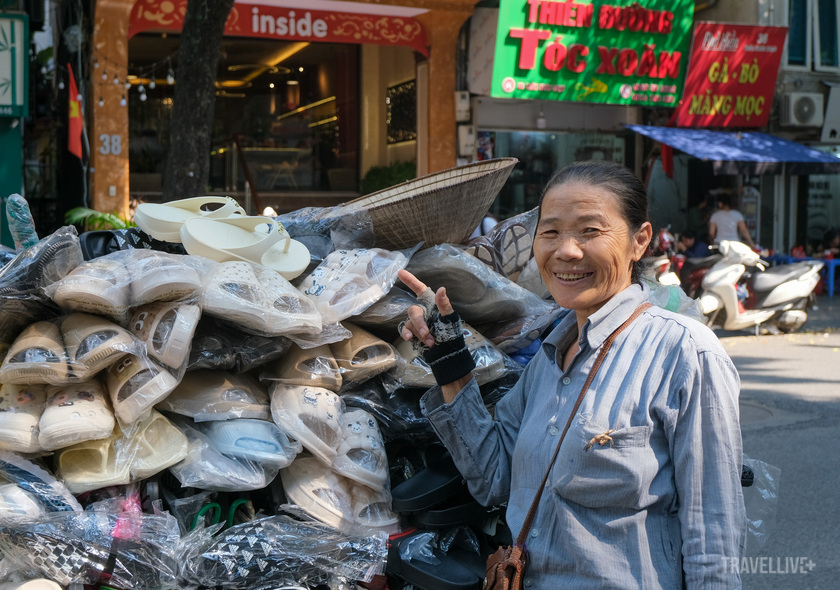
Mrs. Tran Thi Mao, 68 years old, and her sandal stall
Street vendors are not only a small business but also a place to preserve and spread the folk cultural values of Hanoi. The rustic dishes, handicrafts or seasonal specialties from street vendors carry the cultural identity of the capital. Banh gio, hot sticky rice, or cool glasses of sweet soup are dishes that have been associated with the lives of Hanoians for many generations, from ancient times to the present. These are not only familiar dishes, but also memories, flavors of memories that Hanoians always remember.
Street vendors also clearly reflect the customs and habits of the Vietnamese people. In each season, the items on the vendors change according to the seasons and festivals. From bright bouquets of flowers in the spring to sweet lychees and longans in the summer, or banh troi and banh chay during the Cold Food Festival, all carry the breath of the earth, nature, and the rhythm of Vietnamese life.
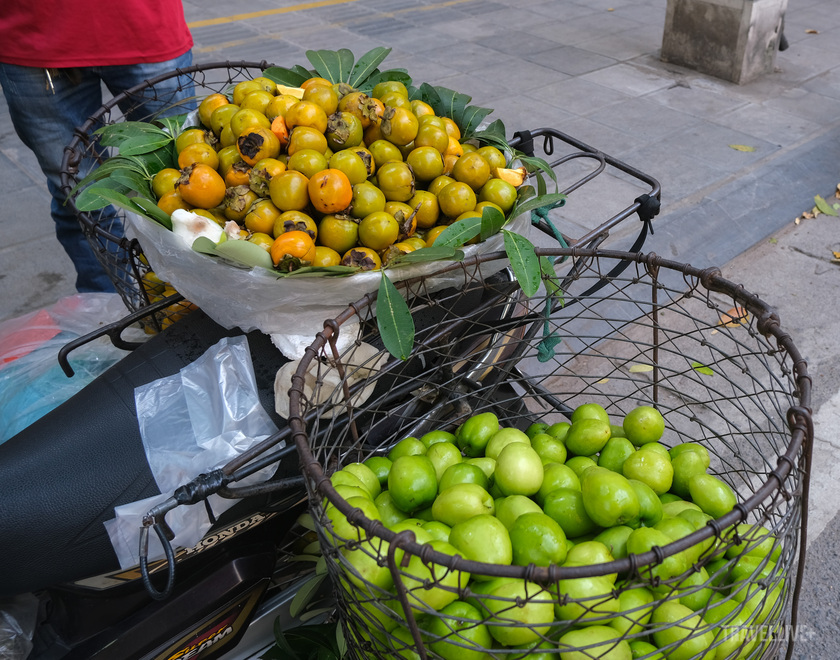
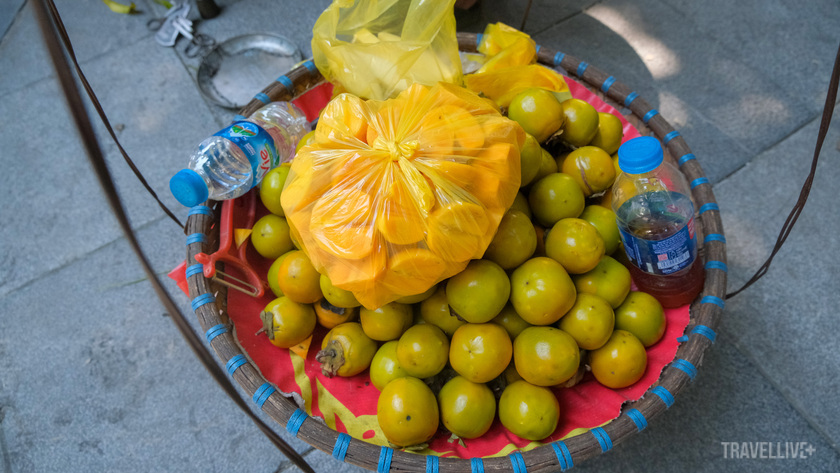
Street vendors have become a "country soul", a simple beauty.
Not only playing an important role in maintaining folk cultural values, street vendors are also associated with the hard-working, resilient lives of the sellers. Behind the heavy burdens are stories of arduous livelihoods, they not only carry goods but also the burden of life, with the hope of earning enough food every day to take care of their families. That harsh life does not fade the smiles on their faces, but also reflects a heartbreaking truth about the difficulties they face. The image of street vendors has outlined the endurance and efforts of poor workers, day after day still quietly passing through each small alley, through busy intersections.

Mrs. Hoa, although smiling, her eyes still showed the hardships of a hard-working life.
When asked about the job of "selling face to the ground, selling back to the sky all year round", Ms. Luong Thi Hoa, 62 years old this year, said: "I'm used to the hardship, I've been selling for 10 years now, not a short time. There are days when sales are good, and days when sales are slow, but I have to try to go, there's not always money."
There are still many street vendors on the streets, each with its own unique characteristics, no two are alike. However, there is an invisible thread connecting them, that is, a common fate, a life of poverty, wandering every day to earn a living. Every morning, they have to carry dozens of kilos of goods, walk dozens of kilometers through each alley to find customers. The cries echoing in the bustling space of the city are not only the rhythm of daily life but also contain fatigue, are sighs of worries about food, clothing, and money.
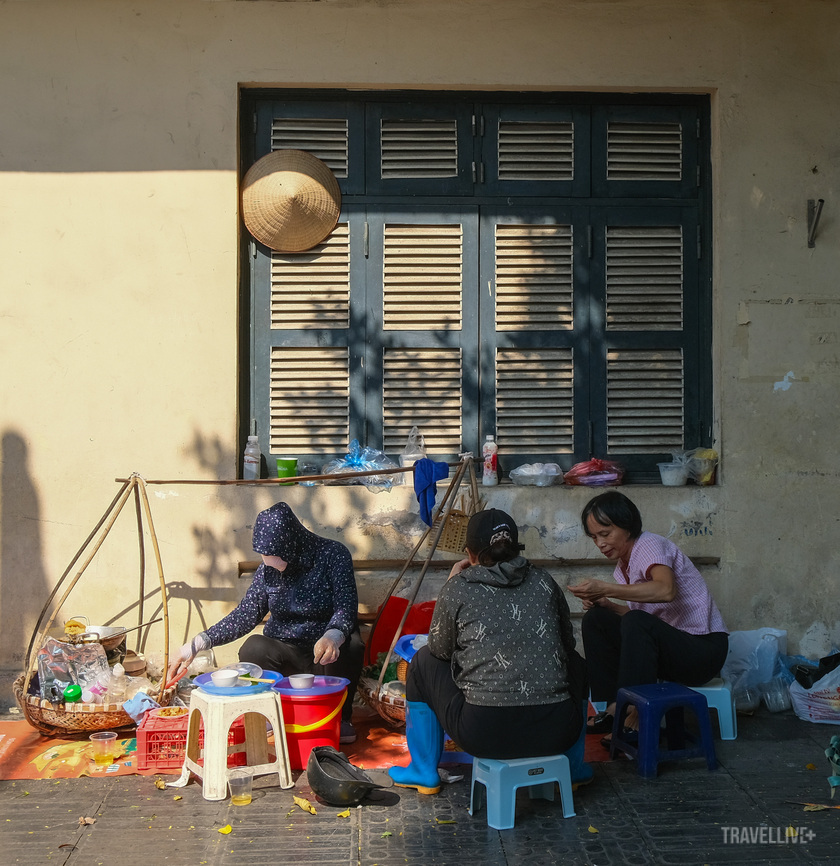
There are still many street vendors on the streets, each with its own unique characteristics, no two are alike.
Street vendors, a tangible thing, have now become a system of values, a measure of the times. In the past, street vendors were simple shoulder poles, carrying simple goods from the countryside to the city. Today, that image still exists, but has changed to adapt to the pace of urban life. Instead of shoulder poles, many people use carts or other means of transport, and goods are also more abundant and diverse to meet new needs. However, amidst the modern flow, street vendors still retain the spirit of tradition, are a bridge of history, a place to preserve the unique flavor of Hanoians over the centuries.
